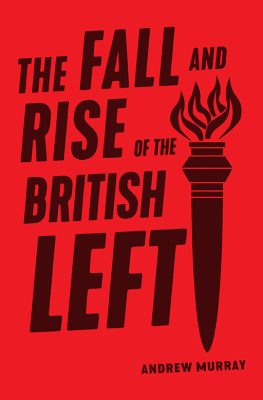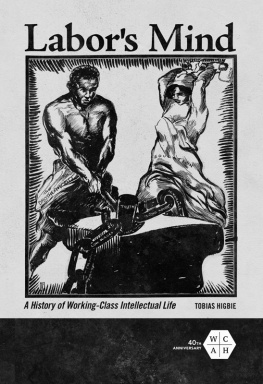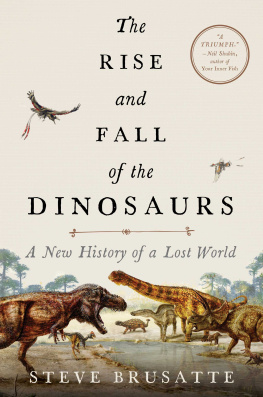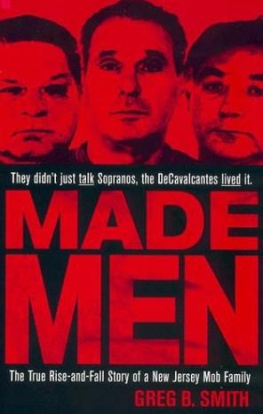Andrew J. Cherlin - Labor’s Love Lost: The Rise and Fall of the Working-Class Family in America
Here you can read online Andrew J. Cherlin - Labor’s Love Lost: The Rise and Fall of the Working-Class Family in America full text of the book (entire story) in english for free. Download pdf and epub, get meaning, cover and reviews about this ebook. year: 2014, publisher: Russell Sage Foundation, genre: Science. Description of the work, (preface) as well as reviews are available. Best literature library LitArk.com created for fans of good reading and offers a wide selection of genres:
Romance novel
Science fiction
Adventure
Detective
Science
History
Home and family
Prose
Art
Politics
Computer
Non-fiction
Religion
Business
Children
Humor
Choose a favorite category and find really read worthwhile books. Enjoy immersion in the world of imagination, feel the emotions of the characters or learn something new for yourself, make an fascinating discovery.

- Book:Labor’s Love Lost: The Rise and Fall of the Working-Class Family in America
- Author:
- Publisher:Russell Sage Foundation
- Genre:
- Year:2014
- Rating:5 / 5
- Favourites:Add to favourites
- Your mark:
- 100
- 1
- 2
- 3
- 4
- 5
Labor’s Love Lost: The Rise and Fall of the Working-Class Family in America: summary, description and annotation
We offer to read an annotation, description, summary or preface (depends on what the author of the book "Labor’s Love Lost: The Rise and Fall of the Working-Class Family in America" wrote himself). If you haven't found the necessary information about the book — write in the comments, we will try to find it.
Andrew J. Cherlin: author's other books
Who wrote Labor’s Love Lost: The Rise and Fall of the Working-Class Family in America? Find out the surname, the name of the author of the book and a list of all author's works by series.
Labor’s Love Lost: The Rise and Fall of the Working-Class Family in America — read online for free the complete book (whole text) full work
Below is the text of the book, divided by pages. System saving the place of the last page read, allows you to conveniently read the book "Labor’s Love Lost: The Rise and Fall of the Working-Class Family in America" online for free, without having to search again every time where you left off. Put a bookmark, and you can go to the page where you finished reading at any time.
Font size:
Interval:
Bookmark:
The Rise and Fall of the Working-Class Family in America
Andrew J. Cherlin
Russell Sage Foundation
New York
The Russell Sage Foundation
The Russell Sage Foundation, one of the oldest of Americas general purpose foundations, was established in 1907 by Mrs. Margaret Olivia Sage for the improvement of social and living conditions in the United States. The Foundation seeks to fulfill this mandate by fostering the development and dissemination of knowledge about the countrys political, social, and economic problems. While the Foundation endeavors to assure the accuracy and objectivity of each book it publishes, the conclusions and interpretations in Russell Sage Foundation publications are those of the authors and not of the Foundation, its Trustees, or its staff. Publication by Russell Sage, therefore, does not imply Foundation endorsement.

Library of Congress Cataloging-in-Publication Data
Cherlin, Andrew J., 1948
Labors love lost : the rise and fall of the working-class family in America / Andrew J. Cherlin.
pages cm
Includes bibliographical references and index.
ISBN 978-0-87154-030-0 (pbk. : alk. paper)ISBN 978-1-61044-844-4 (ebook)
1. Working class familiesUnited States. I. Title.
HQ536.C439 2014
306.8508623dc23 2014024099
Copyright 2014 by Russell Sage Foundation. All rights reserved. Printed in the United States of America. No part of this publication may be reproduced, stored in a retrieval system, or transmitted in any form or by any means, electronic, mechanical, photocopying, recording, or otherwise, without the prior written permission of the publisher.
Reproduction by the United States Government in whole or in part is permitted for any purpose.
The paper used in this publication meets the minimum requirements of American National Standard for Information SciencesPermanence of Paper for Printed Library Materials. ANSI Z39.48-1992.
Text design by Suzanne Nichols
RUSSELL SAGE FOUNDATION
112 East 64th Street, New York, New York 10065
10 9 8 7 6 5 4 3 2 1
For Susan and Jessica
Andrew J. Cherlin is the Benjamin H. Griswold III Professor of Public Policy in the Department of Sociology at the Johns Hopkins University.
THIS BOOK WAS written while I was a visiting scholar at the Russell Sage Foundation in New York City during the academic year 20132014. Without the support of this generous fellowship, I would not have been able to write it. I thank the foundation and its helpful staff for supporting my work. Thanks also to visiting scholar Douglas McAdam for his comments. Two reviewers, Paula England and Nancy Folbre, provided excellent detailed critiques of the manuscript that guided my revisions. My wife, Cynthia Osborne, put up with a year of travel back and forth from New York to Baltimore; I thank her for her forbearance.
AMERICAN SOCIETY HAS now experienced the rise and fall of a distinctive kind of home life: the working-class family. It originated in the early 1800s when the industrialization of the American economy began, and it accelerated later in the century as the growing number of manufacturing jobs attracted millions of migrants from Europe and rural America. It centered on marriage and was, as historians and social scientists like to say, a deeply gendered form of family life. Husbands were expected to take factory jobs and to work full-timewhich in the nineteenth century usually meant ten or twelve hours a day, six days a weekthroughout adulthood. Wives were expected to focus on the home, managing a meager budget and meeting the day-to-day needs of husbands and children at a time when family sizes were larger andwith no gas, no electricity, no home appliances, no telephone, and often no running water or indoor plumbinghousework was far more arduous than today. Working-class wives also made important contributions to the family income in the nineteenth and early twentieth centuries by earning money at home. They took in boardersunrelated individuals who paid to live in their home or just to eat meals with themor did piecework such as assembling hats or shoes. Occasionally, they even worked for wages outside the home. Sons were expected to take jobs at an early agetwelve or fourteen before compulsory school attendance laws raised the age to sixteenand to turn over their wages to their parents. Daughters were expected to either work for wages or help their mothers at home.
The fortunes of the working-class family crested during the thirty-year period that followed World War II, when incomes rose sharply and prosperity spread more broadly than ever before. The average manufacturing wage more than doubled in purchasing power from 1950 to 1970, allowing,
To be sure, the male-breadwinner family was a lesser part of the lives of African American families than it was among whites. The cultural ideal of the homemaker who devoted herself exclusively to household work and child care never really applied to African American women. Rather, they had always been expected to work outside the home: first in the fields as slaves, then as sharecroppers indebted to their landlords, then as domestic servants and washerwomen to white households. Moreover, marriage rates had long been lower for African Americans than for whites, and African American men had not been allowed to share fully in the wage gains that accrued to white men; manufacturing and crafts unions for the most part excluded them. Factory owners hired African American men for the least desirable jobs, if at all. This situation began to change after World War II, when the ranks of African American manufacturing workers rose markedly and African American women started to move out of domestic service and into clerical, sales, and service jobs. In 1960 about 45 percent of African American women with children were both married and not working outside the home. That was less than the 79 percent figure for comparable white women, but still a substantial change. And for both African
At midcentury, social observers thought the good times would last indefinitelythat we had reached the end of history and with it, the highest form of family life. Influential sociologists such as Talcott Parsons argued that the male-breadwinner family was well suited to an industrial society: since only the husband had a job, and since occupational success was his goal, the family could easily move from place to place as the husband followed the needs of the labor market. But after the Arab members of the Organization of the Petroleum Exporting Countries initiated an oil embargo in 1973, the economy began a prolonged slump and the postwar boom came to an end. In the 1980s and afterward, many of the manufacturing jobs that had sustained the working-class family moved to overseas factories or were computerized, and as the economy was transformed working-class young adults struggled to sustain the male-breadwinner marriage. Increasing numbers of working-class wives entered the labor force, usually part-time while their children were young and full-time when they were older; unlike some of their middle-class counterparts, they worked more for the money than for personal satisfaction.
Yet even had the economy remained strong, it is likely that the working-class version of the male-breadwinner family would have eventually declined. It faced internal contradictions that the prosperity and optimism of the postwar years hid. For one thing, there was much less for the full-time homemaker to do. Even Parsons recognized that the role of the housewife has declined in importance to the point where it scarcely approaches a full-time occupation for a vigorous person. Fertility had fallen from the six or seven children that women bore in the early 1800s to the four-child family in the late 1800s, to the three-child family at the peak of the 1950s baby boom. Births fell further after the 1950s as parents realized that the best family strategy was to have fewer children and to invest more time and resources in each of them. Modern utilities and conveniences such as electrically powered washers, dryers, stoves, refrigerators, and vacuum cleaners all became available on a mass scale for the first time and made keeping house more efficient. Granted, a consumer culture invented more work for the housewifeever-cleaner homes and ever more elaborately prepared mealsbut the long-term trend was to diminish the housewifes role.
Font size:
Interval:
Bookmark:
Similar books «Labor’s Love Lost: The Rise and Fall of the Working-Class Family in America»
Look at similar books to Labor’s Love Lost: The Rise and Fall of the Working-Class Family in America. We have selected literature similar in name and meaning in the hope of providing readers with more options to find new, interesting, not yet read works.
Discussion, reviews of the book Labor’s Love Lost: The Rise and Fall of the Working-Class Family in America and just readers' own opinions. Leave your comments, write what you think about the work, its meaning or the main characters. Specify what exactly you liked and what you didn't like, and why you think so.






